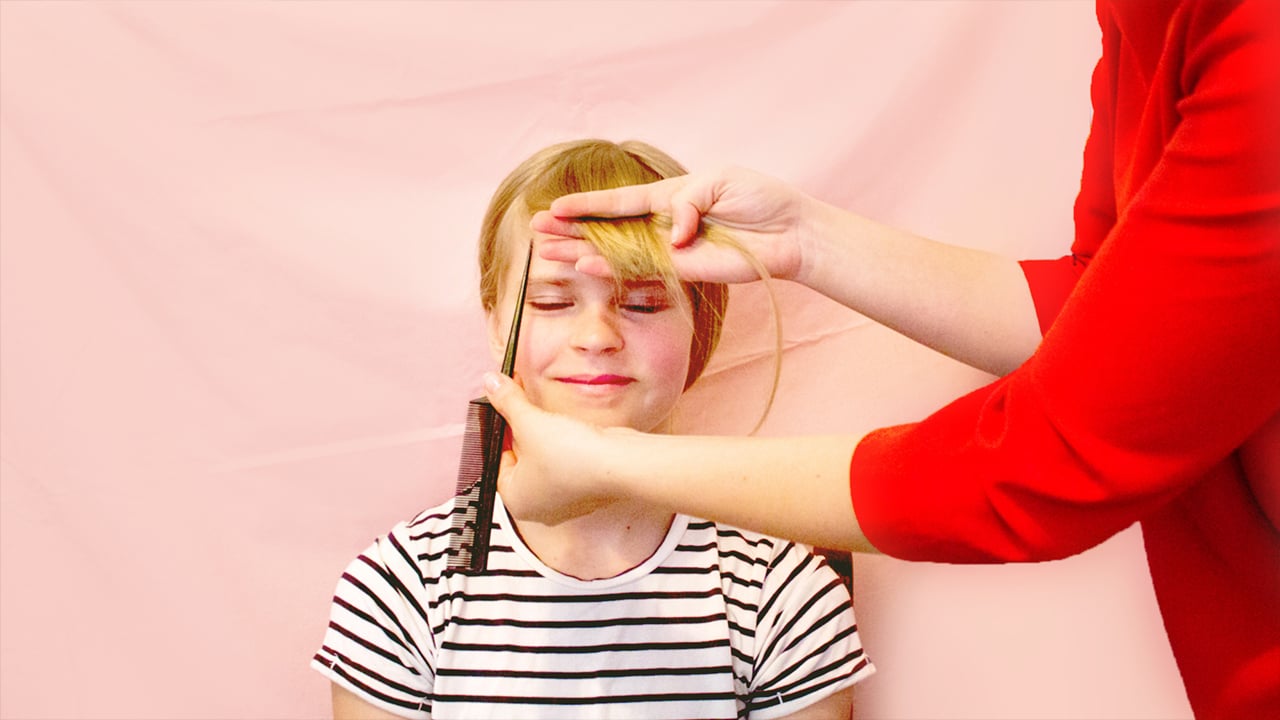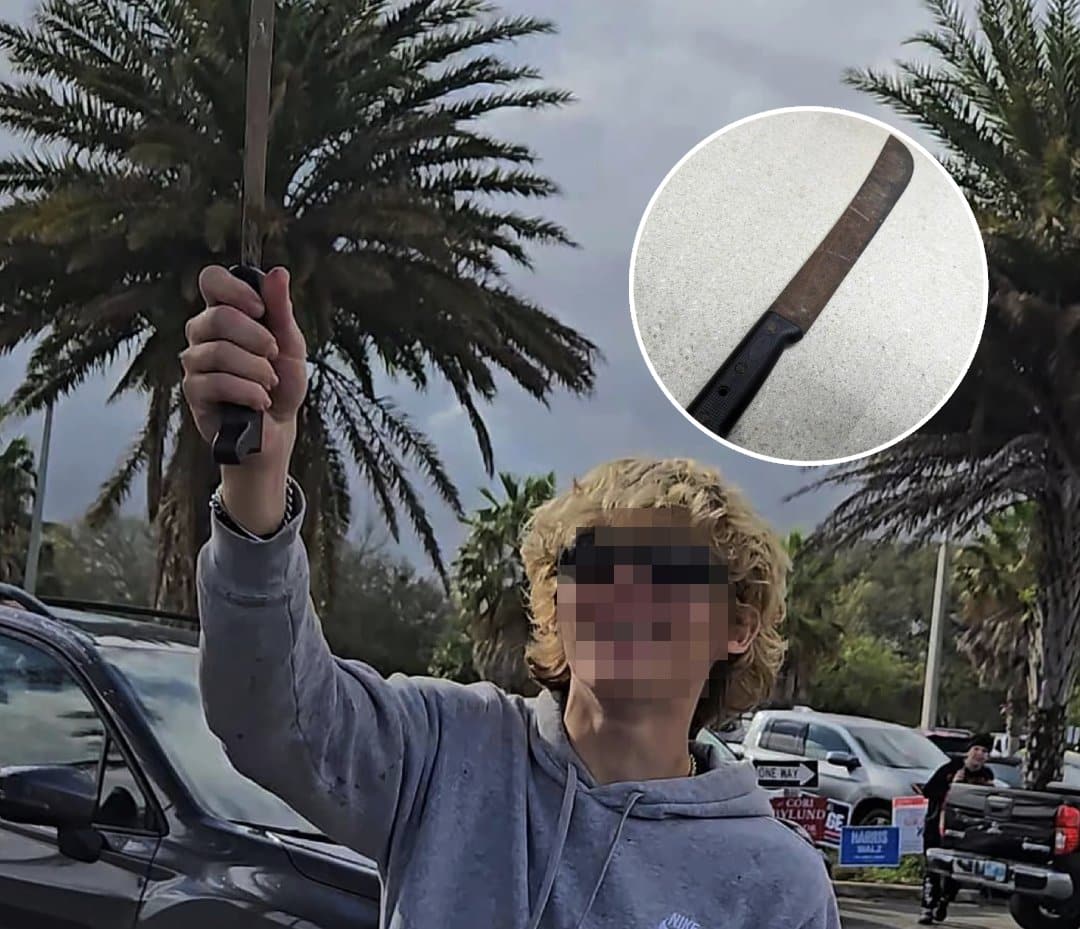This step-by-step guide makes maintaining your child’s fringe (or your own!) a total breeze. Here’s exactly how to cut bangs.
Straight, wavy or curly: Every type of mane looks good with a fringe. Plus, it’s a signature component of many popular hairstyles for boys and girls alike. “Now, you see a lot of little boys with longer hair,” says Kristjan Hayden, hairstylist at Civello Salons and Creative Director at Aveda Canada. “There’s definitely not a short-hair-for-boys, long-hair-for-girls rule at all. You see a lot of parents cutting bangs into girls’ or boys’ hair just because they want to get it out of their eyes.”
If you do it right, trimming hair at home saves money and time. Ready to take the plunge? Try these pro tips for how to cut bangs at home—you can even try them out on yourself.
How to cut bangs: Your toolkit
- Haircutting shears – Pick up a pair at your local drugstore or order some online. “The blades in haircutting shears are closer together and prevent the hairs from folding when you cut them” says Hayden. But if you can’t get your hands on a pair, don’t fret. Normal kitchen scissors will do the trick in a pinch— desperate times, right?
- Haircutting comb – Choose a comb with wider teeth for hair that is prone to tangling.
- Fluffy makeup brush – If dry hair falls on your child’s face, quickly dust it off before he starts to squirm.
- Towel and/or cape – Again, keeping your child’s clothing and skin covered will prevent squirming if dry hair falls.
- Hair clips
- Phone or tablet — screen time is your friend in this situation.
Step 1: Wash and dry
Make sure your child’s hair is clean and dry before you begin. When it comes to cutting bangs, it’s easier to cut them dry because you’ll be able to see exactly where each section of hair will fall across the forehead. This step is especially important for curly hair. “Pull the front part forward a little before it dries, then cut it how it naturally falls,” says Hayden.
Step 2: Set up your station
Gather all of your supplies and set up in a quiet, low-traffic area of your home. Then, settle your child with a video placed at eye level. “If they’re watching some sort of video, it is a 100,000 times easier to get them to sit still while you learn how to cut bangs,” says Hayden. And if you need them to move their head, simply move the screen in the proper direction.
Step 3: Section the hair
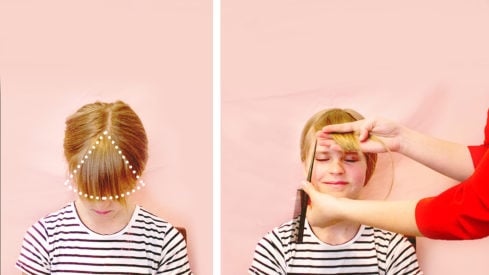
Next, separate the section of hair that will create the fringe. “I always take a look at where the hair just above the face naturally falls forward at the round of the head,” says Hayden. Think of this point (at the centre of the face and usually a couple inches above the hairline) as the top of a triangle. Imagine two lines running from this point down to the “corners of the forehead at the hairline” where the hair naturally starts to recede. That triangle of hair is what you will use to create a fringe. Don’t try to pull more hair into this area for a fuller bang. “Nature’s ultimately going to win and those pieces will fall back to their original position,” notes Hayden. Clip back the rest of the hair so it’s off the face and out of the way.
Step 4: Start cutting
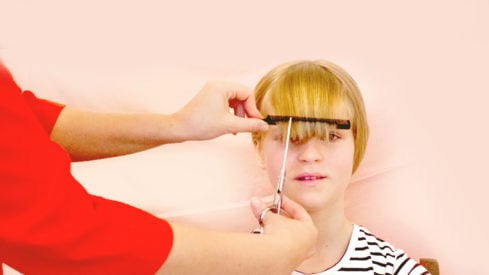
If you’re trimming curly hair, “isolate each individual curl at exactly the spot that you want it to hit” and snip, says Hayden. But if you’re cutting straighter hairstyles, it becomes a bit more complicated. Comb through the hair until the comb rests just above your desired length (longer for a shaggy look and shorter for chic, fashion styles), then cut into the hair—not across it. “If you’re pointing into the hair, it’s harder to make a mistake,” Hayden says. “Horizontal lines in haircutting are the hardest to work with.” If you have a squirmy child and are worried about poking her, use texturizing shears, which have guarded teeth.![]()
![]()
![]()
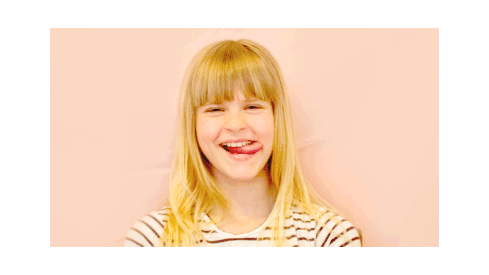
Now you’re all set to cut bangs like a pro… at least, after a little practice. Just keep in mind, “super-straight, shiny hair is definitely the hardest to cut, so don’t beat yourself up if you find it challenging,” says Hayden. “But if you do make a mistake, that motion of cutting into the hair is going to blend in any horizontal lines or areas that look choppy.”
This story was originally published in 2020.

 PARENTING TIPS
PARENTING TIPS







 PREGNANCY
PREGNANCY








 BABY CARE
BABY CARE








 TODDLERS
TODDLERS








 TEENS
TEENS








 HEALTH CARE
HEALTH CARE







 ACTIVITIES & CRAFTS
ACTIVITIES & CRAFTS








 CONTACT
CONTACT ABOUT
ABOUT